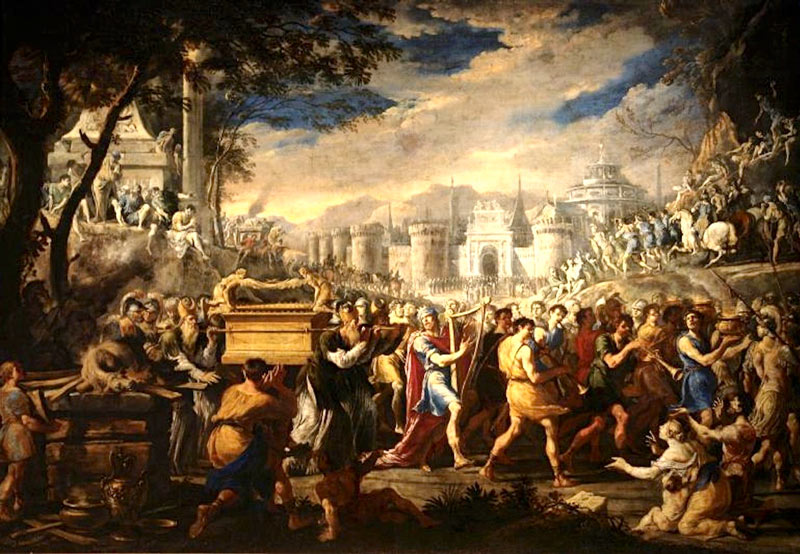
The 50 days of Easter are a solemn journey with Christ to glory. This is showcased as each Mass begins with the liturgical procession.
In Christianity, processions make imminent sense because the One worshipped is the God who literally walked in the footsteps of His people. Yet religious processions were nothing new.
The solemn transportations of the Ark of the Covenant were well remembered by Hebrews. In Rome, pagan festivals like Robigalia involved large processions culminating in animal sacrifices to petition the gods.
Organized religious processions are expressions of a people’s desire to walk in mutual harmony toward and with their God. The triumphant procession of Jesus into Jerusalem commemorated on Palm Sunday is the prototype of the Church’s liturgical march.
As at each Sunday Mass, so then believers lined up along the path of the Lord’s cross singing with joy. Some Catholics are largely familiar only with the procession to and from the altar at Mass.
In early Rome, however, the pope, clergy, and faithful alike gathered at a church called a station, and, after prayers, marched in unison to another church where Mass would be celebrated. What a world without clocks!
This united strangers that came from all seven hills of Rome, but who professed the same faith. They would pray and process to another church for Mass following a cross carried by the sick, succeeded by the crosses, candles and faithful of the seven hills.
Led by two crosses of his own, the pope followed. To support the singing, the choir brought up the rear.
Once they arrived in the church for Mass, the people took their places in the nave while the pope prepared in the sacristy. To show a eucharistic hierarchy, the procession to the altar was much more restricted than the stational procession.
Everything culminated in arrival at the altar as the final destination and reason for the gathering. Each took up their proper place: the faithful in the nave, or “ship” leading toward heaven, and the unworthy ministers unfolding the divine drama proceeding alone to the altar.
Only on Corpus Christi is the order reversed. Processing, sacrificing and communing becomes sacrificing, communing and processing with the Lord in hand to illustrate His lasting presence.
Perhaps the distinction of processions is worthy of rediscovery. It’s common in parishes to see honor guard like the Knights of Columbus, first communicants, or even graduates follow the cross as part of the liturgical procession.
Worthy of recognition and appreciated for their service, they really should not form part of the procession whose destination is the altar because they carry out no service there. Like in the days of old, perhaps a procession of these groups should come first, since we no longer gather in separate churches.
Parades are plentiful, but processing to the altar to celebrate the triumph of the Lord over the earthly elements of bread and wine, death and the tomb is worth exclusive recognition. What a perfect time for joyful singing!
